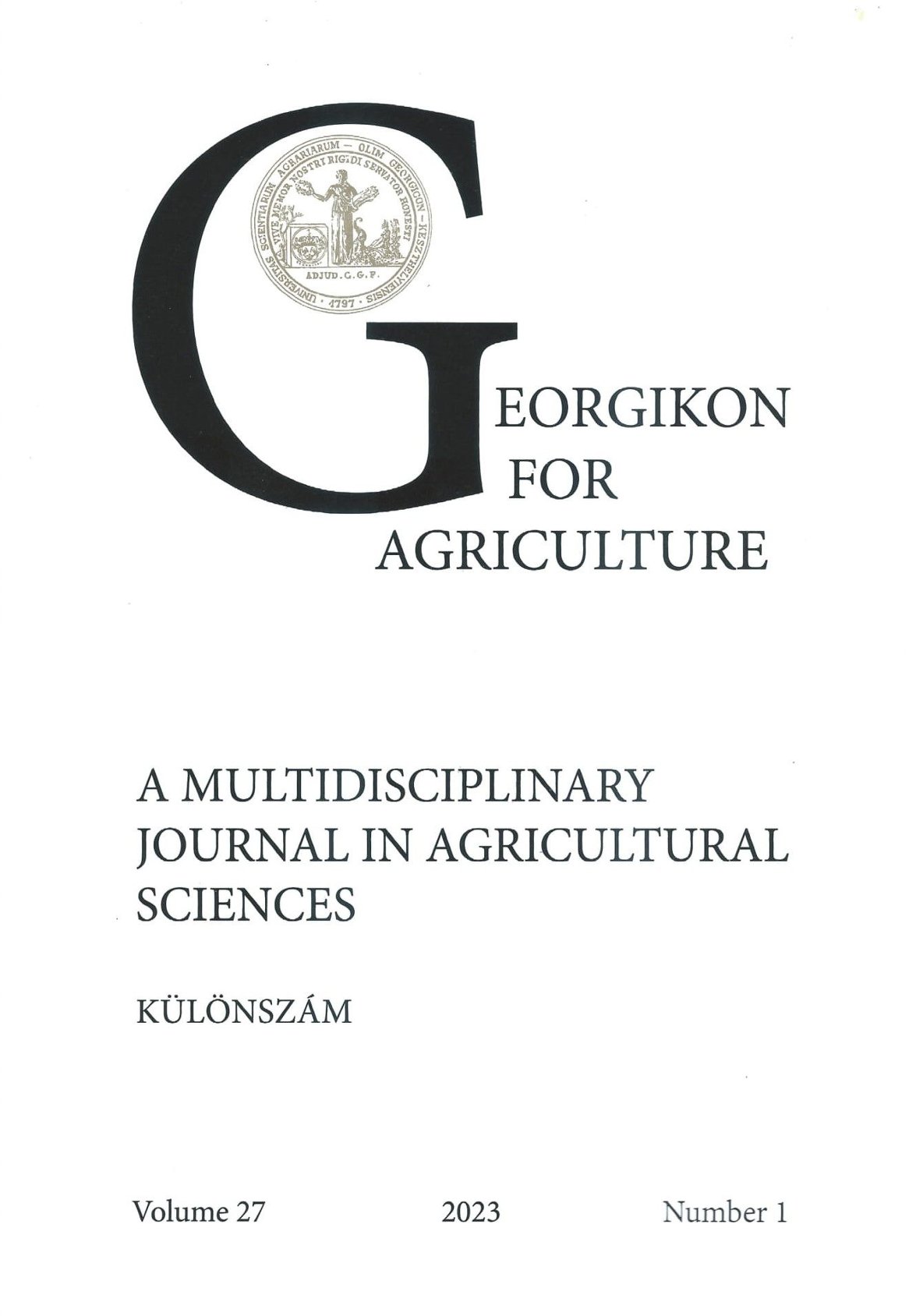Pollen-spóra interakció vizsgálata Botrytis cinerea kórokozón: egy új megközelítés előzetes eredményei
Kulcsszavak:
mikrobiális kommunikáció, quorum sensing, spektrofotometriaAbsztrakt
A pollen-spóra interakciót meghatározó háttérmechanizmusokra eddig kevés figyelem irányult. Ezeket a hatásokat részben a mikrobiális kémiai kommunikáció jelensége magyarázhatja. Jelen munka részletesebb, feltáró kutatásunk legfontosabb kezdeti lépéseit kívánja bemutatni. Elővizsgálatunk legfőbb célkitűzése volt, hogy validáljuk az alkalmazott módszertant, illetve teszteljük a konídiumok csírázását befolyásoló legfontosabb tényezőket. A vizsgálat során modellszervezetként a Botrytis cinerea növénypatogén gombát választottuk. Kezdeti eredményeink arra utalnak, hogy az alkalmazott módszertan alkalmas a konídiumok kezdeti fejlődésének nyomon követésére. Jelentős különbséget figyeltünk meg a kivonatok típusával kapcsolatban, aminek számottevő idő- és koncentrációfüggő hatása van. Mindez arra utalhat, hogy a Botrytis cinerea kórokozó konídiumainak fejlődését olyan szabályozó molekulák befolyásolják, amelyek analóg hatásúak lehetnek a növényi pollenekben található stimulátor vegyületekkel.
Hivatkozások
Barriuso, J. 2015. Quorum sensing mechanisms in fungi. AIMS Microbiology 1(1). 37-47.
Hennebert, G. L. 1973. Botrytis and Botrytis-like genera. Persoonia 7. 183-204.
Hernandez-Albíter, R. C., Barrera-Necha, L. L. and Bautista-Baños, S. 2007. Antifungal Potential of Crude Plant Extracts on Conidial Germination of Two Isolates of Colletotrichum gloeosporioides (Penz.) Penz. And Sacc. Revista Mexicana de Fitopatología. 25(2).180-185.
Kocsis, I., Petróczy, M., Takács, Z. K. and Markó, G. 2022. Stimulation role of pollen grains in the initial development of Botrytis cinerea: The importance of host compatibility, cultivation status and pollen size. Journal of Phytopathology 170. 828- 837.
Lindsay, A. K., Deveau, A., Piispanen, A. E. and Hogan, D. A. 2012. Farnesol and cyclic AMP signaling effects on the hypha-to-yeast transition in Candida albicans. Eukaryotic Cell 11(10). 1219-1225.
Mehmood, A., Liu, G. and Wang, X. 2019. Fungal Quorum-Sensing Molecules and Inhibitors with Potential Antifungal Activity: A Review. Molecules 24(10). 1950.
Ogawa, J. M. and English, H. 1960. Blossom blight and green fruit rot of almond, apricot and plum caused by Botrytis cinerea. Plant Disease Reporter 44(4). 265-268.
Padder, S. A., Prasad, R and Shah, A. H. 2018. Quorum sensing: A less known mode of communication among fungi. Microbiological Research 210. 51-58.
Rosero-Hernández, E. D. and Echeverri, F. L. 2020. The Search for Quorum Sensing in Botrytis cinerea: Regulatory Activity of Its Extracts on Its Development. Plants 9(2). 168.
Sato, T., Watanabe, T., Mikami, T. and Matsumoto, T. 2004. Farnesol, a morphogenetic autoregulatory substance in the dimorphic fungus Candida albicans, inhibits hyphae growth through suppression of a mitogen-activated protein kinase cascade. Biological and Pharmaceutical Bulletin 27(5). 751-752.
Song, X., Bera, S., Yao, Y., Ferguson, D. and Li, C. 2014. Tree barks as a natural trap for airborne spores and pollen grains from China. Chinese Science Bulletin 59(19). 2331-2339.
Letöltések
Megjelent
Folyóirat szám
Rovat
License
Copyright (c) 2023 Kocsis Ivett, Petróczy Marietta, Markó Gábor

This work is licensed under a Creative Commons Attribution-NonCommercial-NoDerivatives 4.0 International License.
The articel is under the Creative Commons 4.0 standard licenc: CC-BY-NC-ND-4.0. Under the following terms: You must give appropriate credit, provide a link to the license, and indicate if changes were made. You may do so in any reasonable manner, but not in any way that suggests the licensor endorses you or your use. You may not use the material for commercial purposes. If you remix, transform, or build upon the material, you may not distribute the modified material. You may not apply legal terms or technological measures that legally restrict others from doing anything the license permits.




 Georgikon for Agriculture
Georgikon for Agriculture